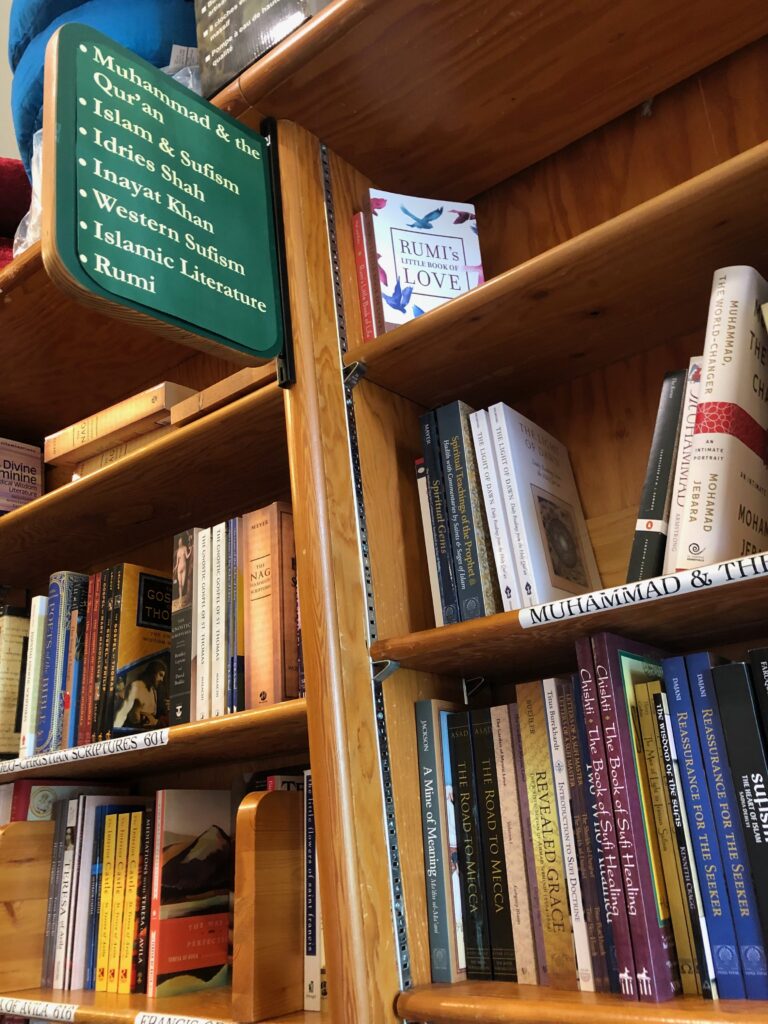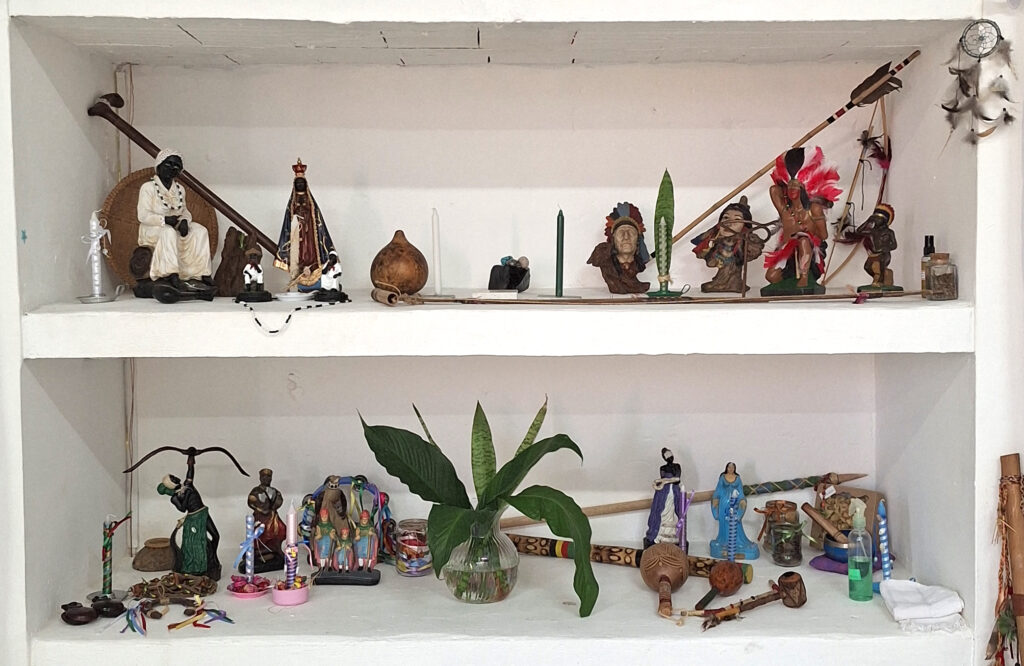I recently gave the lecture ‘The Gift of the Last Magi’ as part of the CAS-E lecture series. I shared an overview of my research project on the nīrangdīn ceremony as it is performed today by the Zoroastrians in India, also known as Parsis. The main purpose of this ceremony is the consecration of bull urine, which at the end of the ceremony becomes an elixir (nīrang) believed to have spiritual properties. The nīrang is of paramount importance to Zoroastrian liturgy, as it is a necessary ritual implement for the performance of major ceremonies such as marriage, initiation of children, ordination of priests and funerary practices, to name a few. It is performed in a fire temple by two priests who have obtained the highest degree of initiation. During this 19-day event, they must perform a large part of the rituals in isolation to maintain the required ritual purity. The cost of the nīrangdīn ceremony is approximately ₹500,000 ≈ $6,500, making it so high that it can only be performed with the help of philanthropists who sponsor the ceremony.

Although there are still a few Parsi priests who perform the nīrangdīn ceremony, this is a precarious practice. Beginning in the 18th century, colonial rule affected the way Parsis have understood and practiced their religion. In particular, the attacks of the Scottish missionary John Wilson (1804–1875) exposed the religious vulnerability of the Zoroastrian community whose lack of theological authority and priestly consensus triggered the emergence of numerous groups that competed with each other and espoused their own interpretation and conception of what authentic Zoroastrianism was. One of these groups proposed the purification of Zoroastrian liturgy from alleged Hindu and Muslim contaminations, and practices such as the nīrangdīn ceremony became subject of controversy. Today, the nīrangdīn ceremony is performed by only a handful of Parsi priests, making it an endangered cultural heritage. Given the scarcity of performers and the financial burden involved, each pair of priests can perform no more than two ceremonies per year. Because of this precarious situation, the nīrang used in other ceremonies is carefully managed and often administered in reduced quantities.
In my lecture, I explored the structure of this 19-days ceremony and suggested that it can be analysed as divided into three main ritual units, performed in sequence. These are:
- the 11-day purificatory ceremony (barašnūm), the purpose of which is to endow the performers with the purity necessary to acquire the ‘great ritual power’ (moṭī khub);
- the performance of six yasna ceremonies in succession (gewrā), the aim of which is to equalise the performers, who must attain the same level of ritual power (hamkalām);
- the nightly performance of the vīdēvdād ceremony, which is performed by the two priests for an average of seven continuous hours without interruption, and whose goal is the transformation of bull urine into the sacred nīrang.

My lecture also offered an analysis of the actors involved in this performance, which opened new perspectives on the patron-priest-divinity triangular relationship usually taken as a basis in the study of Indo-Iranian rituals. Indeed, I proposed to consider the involvement of other participants and their agency as an integral component of the nīrangdīn ceremony. For example, the relatives of the two performers are required to maintain distance from non-Zoroastrians during part of the performance in order to be able to cook and deliver food for their beloved. I have also suggested that non-human actors play a role in the successful performance of the nīrangdīn ceremony. Ritual implements (ālat), for example, connect the priests with the spiritual dimension and acquire a special power during the performance. In addition, a dog is used for the barašnūm ceremony because the Parsis believe it has the ability to detect and eventually bark away the demon of pollution (nasu). Therefore, I proposed to look at the involvement of human and non-human actors and their participation as a web of relations in which the two priests occupy a central role.
My final remarks emphasise the need to take into account the cosmologies and ontologies of the communities we study for the comparative work that CAS-E intends to undertake in the coming years. In fact, I find risky to single out Zoroastrian ritual actions and compare them to similar actions performed by other communities in different contexts, which will most likely lead to results whose validity is low. I argue that the ambitious project of this research centre should be accompanied by a cosmological and ontological contextualization.
A lively debate and numerous questions followed my lecture. The audience was particularly interested in the role played by the dog in the purificatory ceremonies and in Zoroastrian ontologies. Interesting suggestions were made to look at early modern Islamic practices in the Persianate world in a comparative perspective. One of the most recurring questions was, “what makes the nīrangdīn ceremony an esoteric practice?” Since this Zoroastrian ceremony affects life events, requires special knowledge, relies on efficacy hidden from the senses, and is controversial and precarious, it certainly fits the heuristic definition proposed by CAS-E. Furthermore, the transformation of matter (bull urine into nīrang) produced by the passage of the priests through the states of purity, equalisation, and ultimate exaltation offers considerations of the materiality and subjectivity of esoteric practice, elements not currently included in the CAS-E definition. What is more, the Parsi community offers an opportunity to look at esotericism as hermeneutics in the context of the plurality that emerged in the Parsi community at the turn of the 19th and 20th centuries. Religious leaders such as Nasarvanji Framji Bilimoria (1852–1922), Behramshah Naoroji Shroff (1858–1927), and Minocher Nusserwanji Pundol (1908–1975) made extensive use of the adjective ‘esoteric’ to qualify emic lexicon in its English translation, seeking to legitimise Zoroastrian concepts and mediate between the colonial categories of religion and science. In addition to examining the ‘esoteric’ in its substantive form, the case of the Indian Zoroastrians shows how we can expand the concept of esotericism to include hermeneutics as an additional level of analysis by placing the emic-etic dialectic in its socio-historical context.
#
Mariano Errichiello is a Postdoctoral Fellow at Centre for Advanced Studies ‘Alternative Rationalities and Esoteric Practices from a Global perspectives’ of the Friedrich-Alexander-Universität Erlangen-Nürnberg (FAU). He specialises in modern Zoroastrianism with a focus on its esoteric currents. His research is informed by an interdisciplinary methodology that combines anthropology, history, philology and sociology. He earned his PhD Religion and Philosophies at SOAS University of London in 2022. His current book project Parsi Esoteric Voices engages with unexplored Parsi Gujarati sources composed in the early 20th century, looking at them as a resource to re-write the modern history of Parsis in the light of post-structuralist theories, placing Zoroastrianism in global religious history.
__
CAS-E blogs may be reprinted with the following acknowledgement: “This article was published by CAS-E on February 17, 2023.”
The views and opinions expressed in blog posts and comments made in response to the blog posts are those of the author(s) and do not necessarily reflect the views and opinions of CAS-E, its founders, its staff, or any agent or institution affiliated with it, nor those of the institution(s) with which the author is affiliated.
__
Image credits: Image 1: © Mariano Errichiello, Surat, 2020. Image 2: © Mariano Errichiello, Udvada, 2019.








